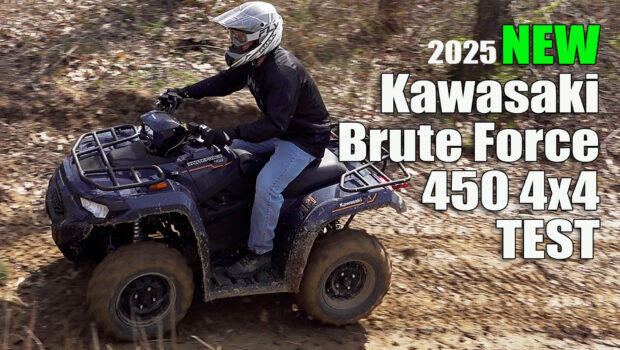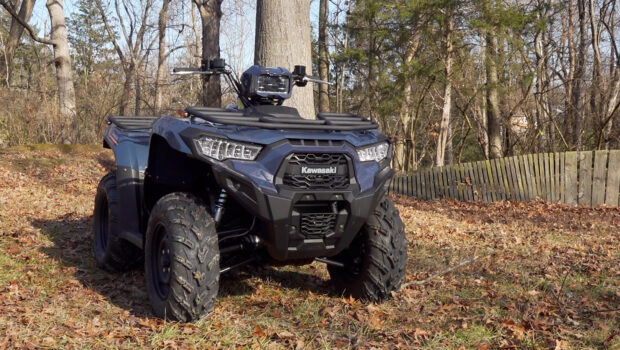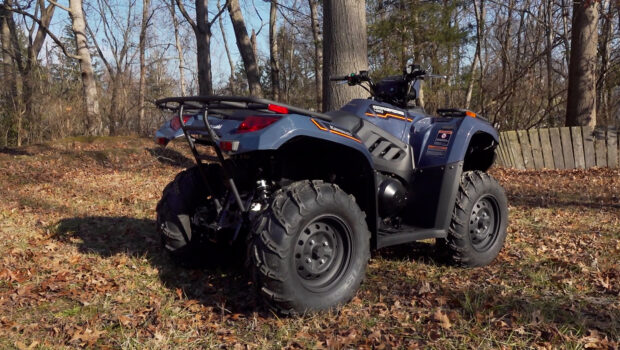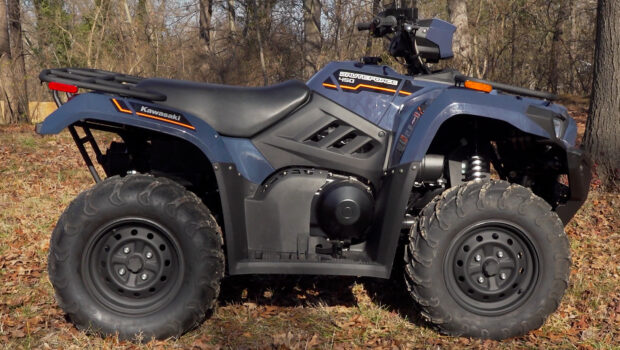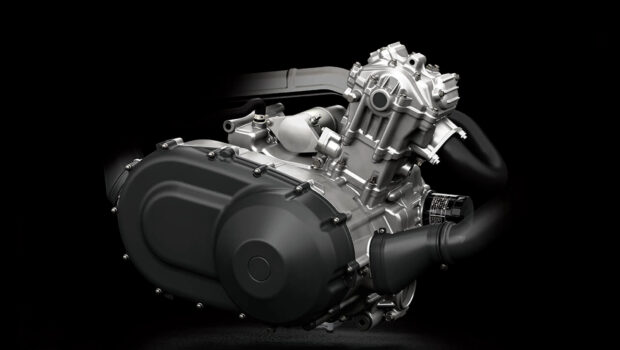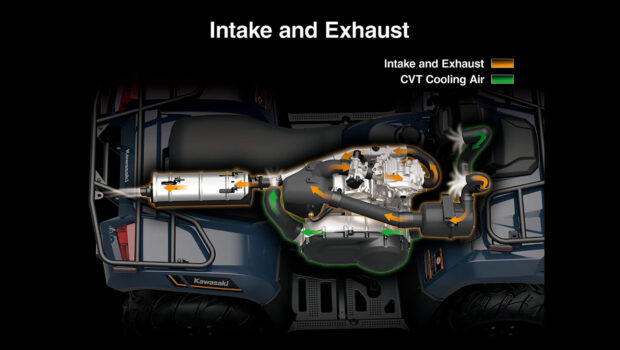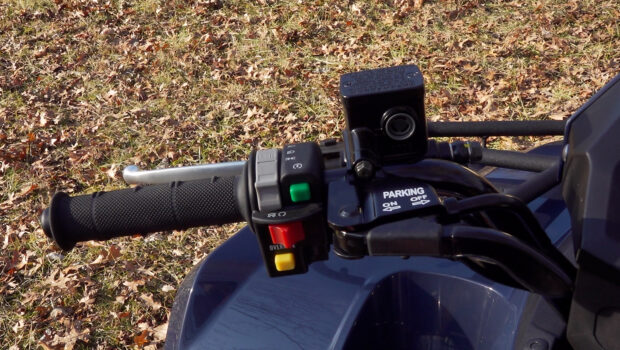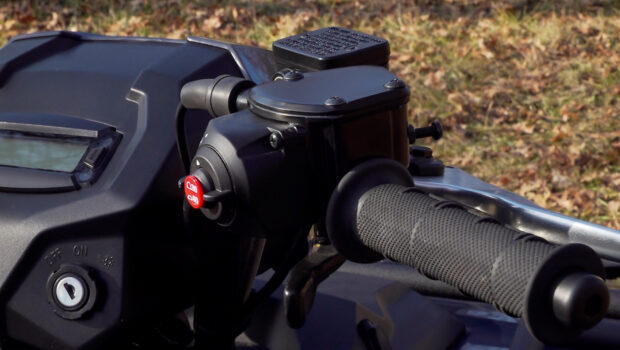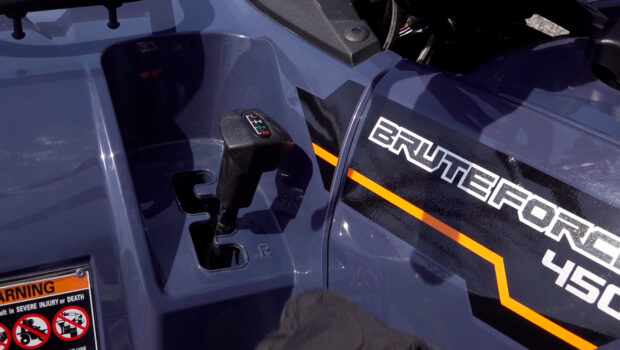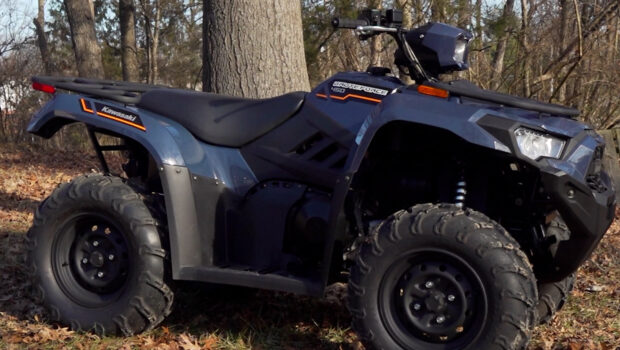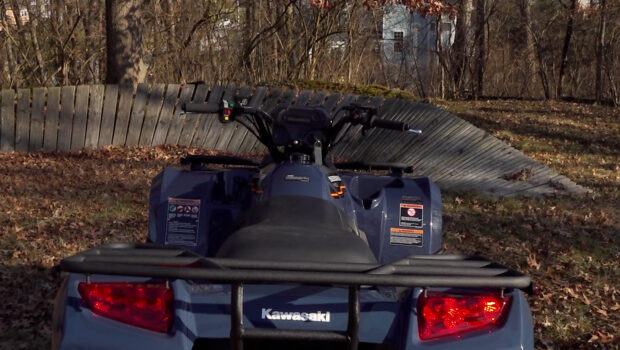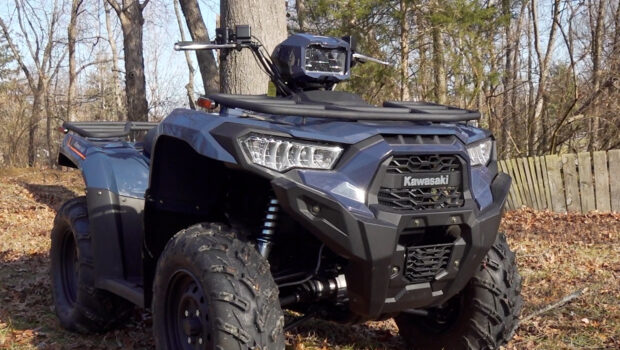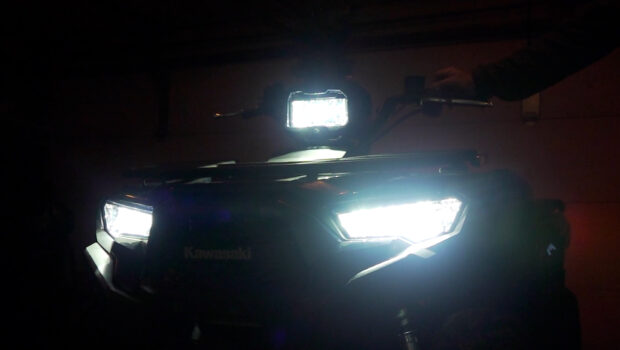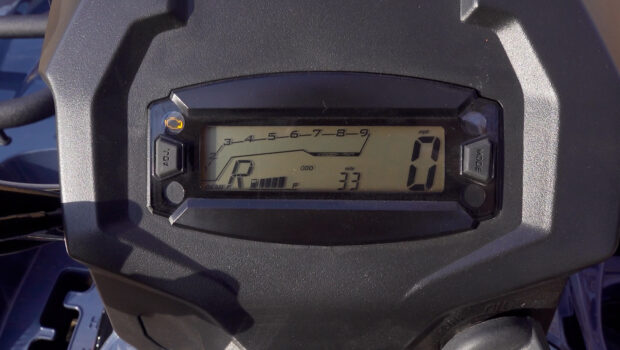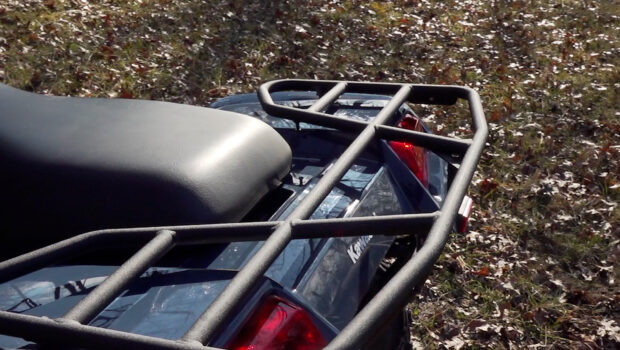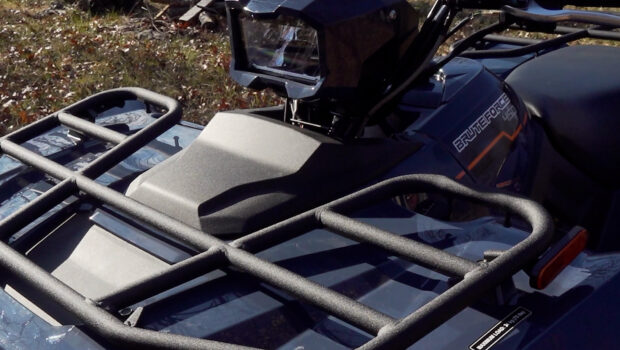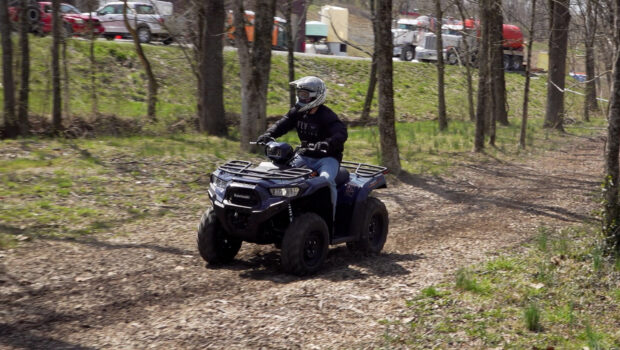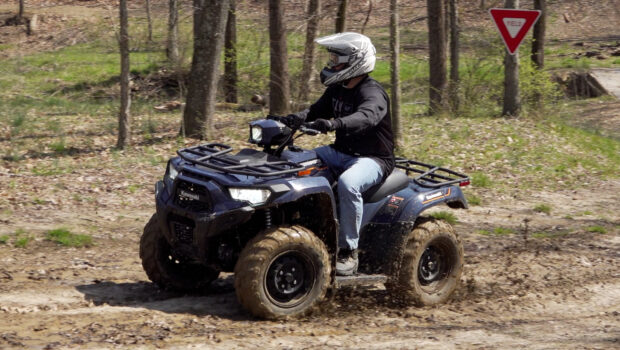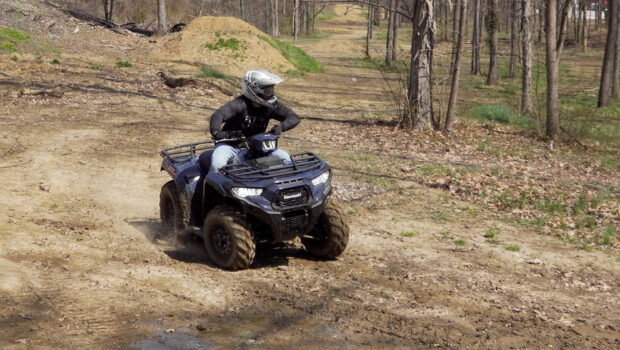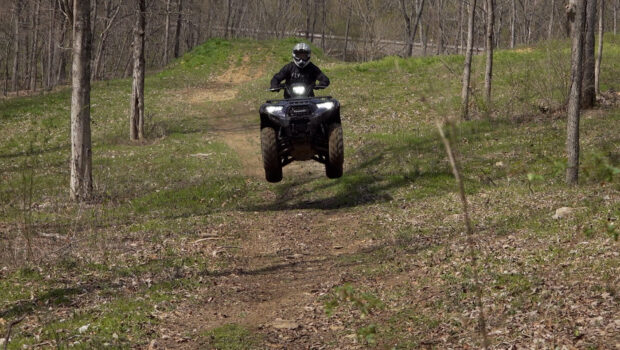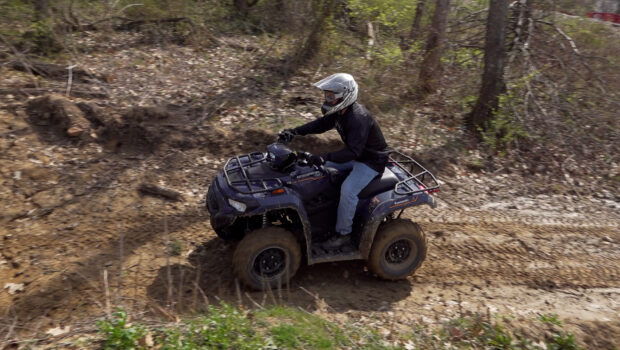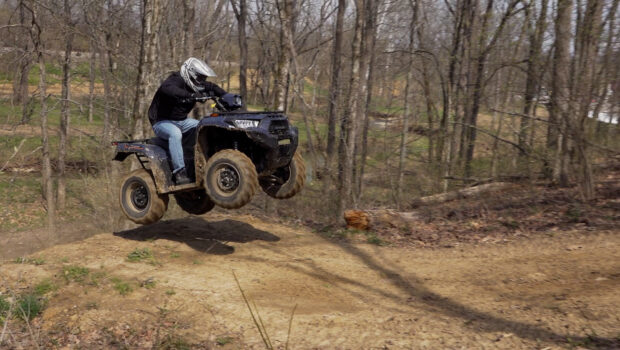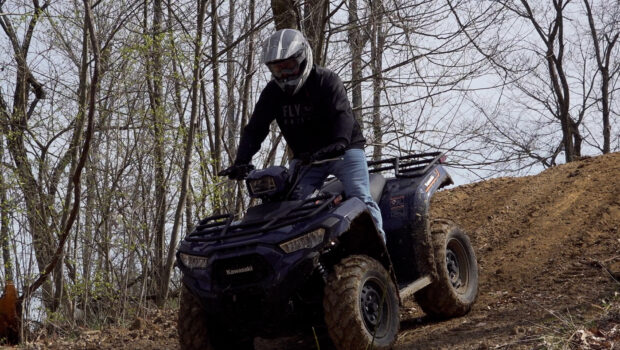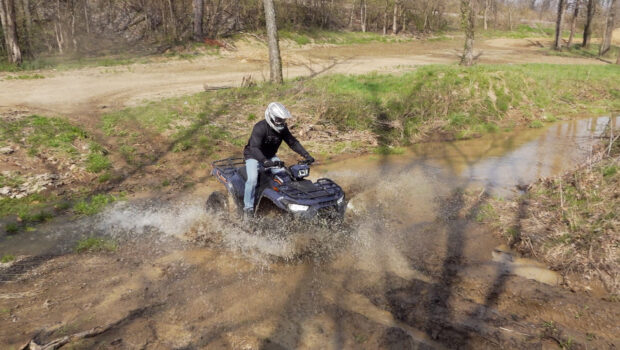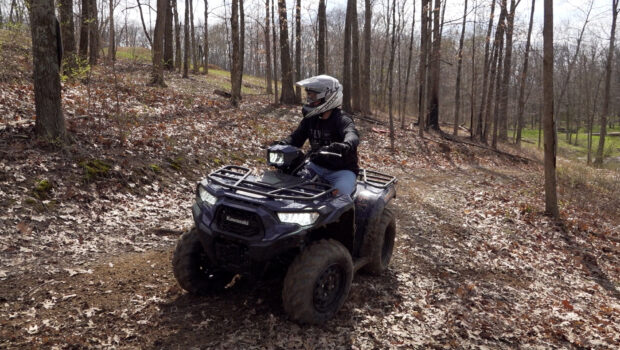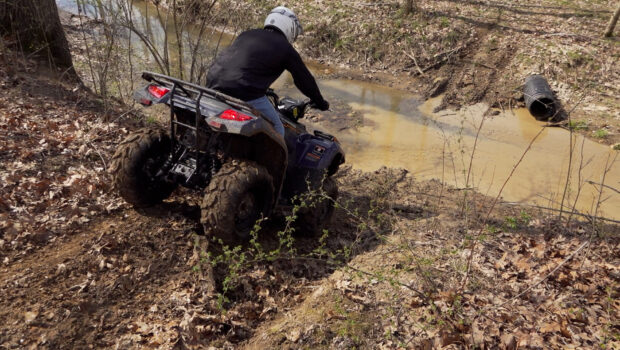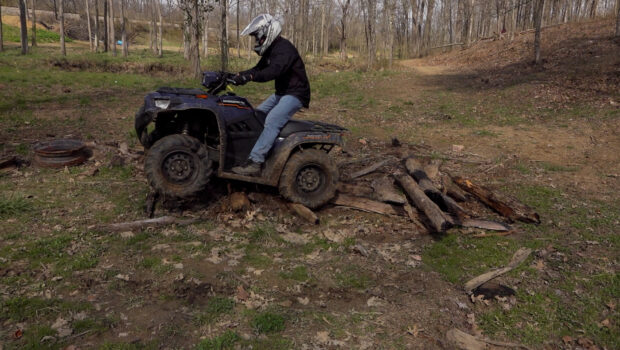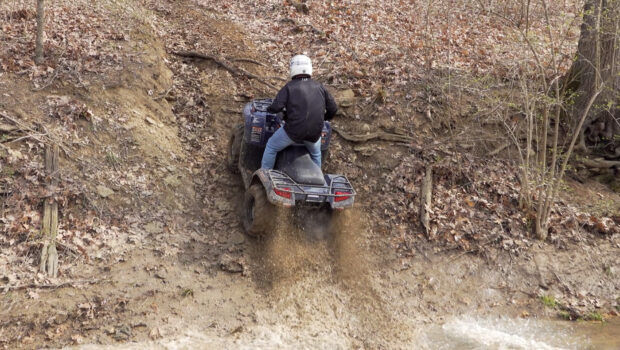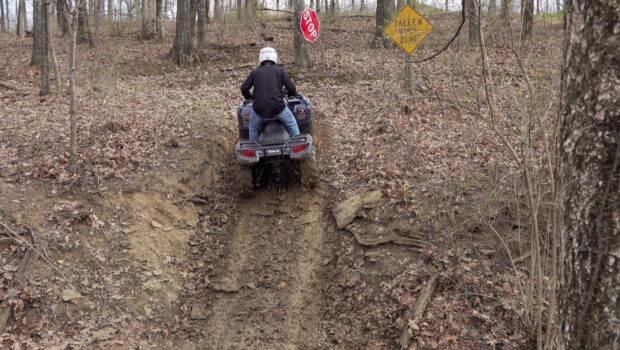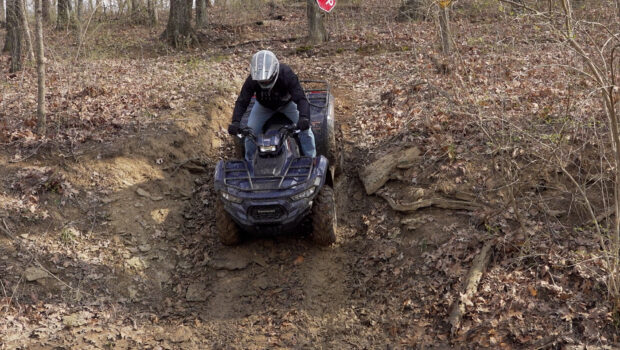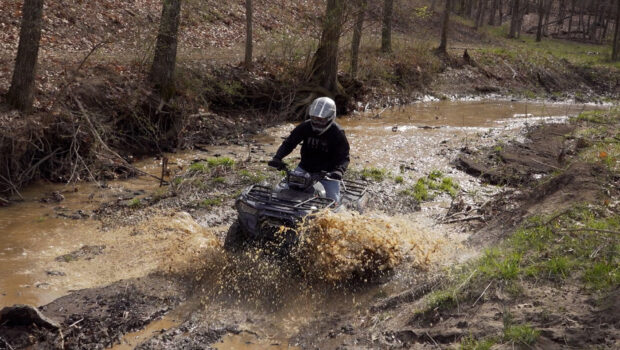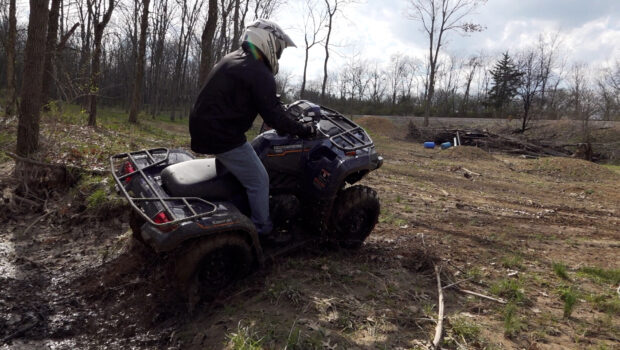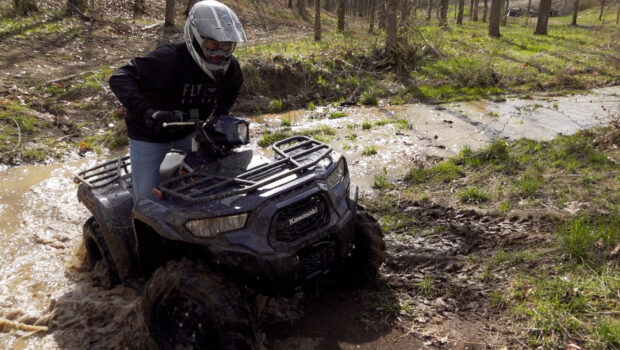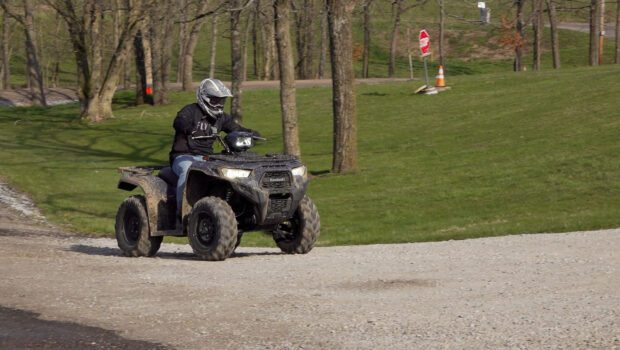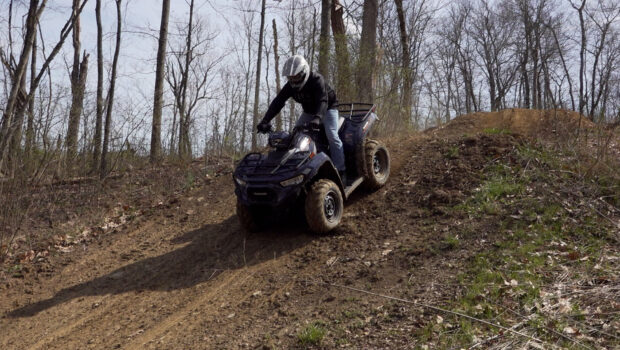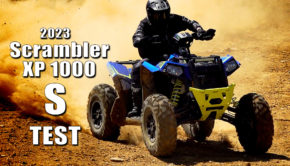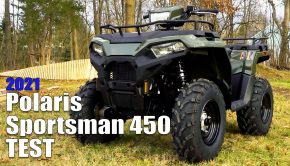NEW 2025 Kawasaki Brute Force 450 Test Review
2025 Kawasaki Brute Force 450 Test Ratings
Summary: All-in-all, we believe the Brute Force 450 is a pretty good machine. Kawasaki needs to implement some front-end updates for 2026 to lighten steering, especially for beginners and smaller adult riders. Other than that, there’s a lot to like about the 2025 Brute Force 450.
3.5
3 Month Test
Mid-size 4×4 ATVs are more than just a displacement number between 400cc and 500cc. It also refers to the machine’s scale. Mid-size ATVs are more responsive to the rider’s body inputs, which makes them more controllable and engaging to ride. They fit smaller riders better, are typically more maneuverable, easier to haul, store, and usually cost a bit less.
Unfortunately, Kawasaki discontinued their last mid-size 4×4 ATV, the Prairie 360 after 2012, leaving them without an offering in a popular segment. For 2025, Kawasaki is remedying this with the release of their brand new Brute Force 450 4X4. With most recent new offerings from other major manufacturers being either full-size ATVs or super quads at sky high prices, Kawasaki picked a great time to release a new, affordable, mid-size 4×4 ATV.
We heard this machine was coming at Kawasaki’s 2020 dealer meeting. Was the Brute Force 450 worth the wait? We’re about to find out!
Trim Packages
We’re thrilled that Kawasaki didn’t create five trim packages of the 450 in an effort to tempt the consumer to upgrade and spend more money. Instead, they simply included everything we used to consider essential on a 4×4 ATV. If you want to customize it, Kawasaki has a number of accessories available. Colors include grayish blue or white. Pricing is competitive from a major brand with its features at $6,699.
Engine Performance
Powering the Brute Force 450 is a water-cooled, 443cc, single-cylinder engine. A four-valve, SOHC head design stands out in a class where less-efficient, two-valve heads are typical. A 9.1:1 compression ratio lets the 450 live happily on cheap 87 octane pump gas. Fuel injection feeds the gas from the 4.2gal. fuel tank via a 38mm throttle body. The exhaust wraps around to a center mounted silencer at the rear.
The airbox is located under the right front fender. It’s not our favorite location, but It offers tool-free access to the air filter. Air is drawn from higher up on the front of the machine. Unfortunately, the CVT vent is located under the seat, so you have to be careful in deeper water and mud to keep the belt and other components dry and clean.
Uncommon in the class, the fully-automatic CVT features a centrifugal clutch to handle engagement and disengagement. This helps reduce wear and tear on the drive belt. The transmission features high and low forward ranges plus neutral and reverse, selected by a gated shifter. There’s an easy to use parking brake lever on the bars but we’d also like “park” in the transmission for added security.
Drive-modes include 2WD and 4WD with a limited slip front differential and electronic front differential lock. Diff lock is a feature often left out in the class, especially without paying a premium. A push button on the right side of the handlebars engages the limited slip front differential. A rotating switch surrounding it engages the front differential lock. This setup lets you go directly from 2WD to full four-wheel lock.
On our 75° test day, the 450 started quickly and ran flawlessly within a minute. In sub-freezing temperatures the engine takes a good five minutes or longer to warm up before throttle hesitation clears up. Low-end power is good, allowing you to cruise around at lower RPMs. Power builds into a respectably strong midrange before signing off on top. There’s plenty of power on tap to conquer most hills that you point the Brute Force up, and it’s fast enough to keep most entertained out on the trail. However, don’t expect to pick the machine sideways in turns in high traction conditions.
High range is great for general trail use. Low range is well suited for work or low-speed, technical trail conditions. Reverse is fine for trail riding, but we would like it to be a bit lower for heavy towing. Engine braking is strong in high-range without being overly abrupt when you let off the gas. In low-range, it will let you crawl down the steepest downhills with the brakes as an afterthought. This will be a huge benefit when towing.
We struggled a bit from time to time getting the machine in gear when shifting into reverse. We suspect a little adjustment of the gated shifter at the dealer would cure this. It wasn’t a deal breaker. Engaging limited-slip 4WD was quick and easy every time. You need to roll a foot or two and maybe wiggle the bars a bit before the front-differential-lock fully engages or disengages. This is common with a lockable front differential.
Aside from a little inconsistency with the gated shifter and cold hearted starting in sub-freezing temps, the engine and drivetrain delivered performance that’s on point or better for the class.
Suspension and Handling
The engine is wrapped in a double-cradle, high-tensile tubular steel chassis protected by a plastic skid plate. Dual A-Arm suspension is found at both ends with 7.6” of travel front and 7.9” of travel rear, near the front of the pack in the mid-size, mid-bore segment. The shocks feature five-way preload adjustability. There is no sway bar at either end. This frees up the suspension for fully independent movement on uneven bumps, but puts all the work of controlling body roll on the shocks. EPS isn’t a feature on the 450. However, with good geometry, it’s not a big deal.
Maxxis tires feature a virtually identical tread to the CSTs used on the Brute Force 750, but in a slightly smaller size, 24×8-12 front and 24×10-12 rear. They’re mounted on steel wheels.
The Brute Force 450 measures in at a claimed 43.7”wide with a 47.8” wheelbase; both compact numbers for a mid-size 4×4. 24” tires and other dimensions yield 9.3” of ground clearance. Seat height is a bit taller than the competition at 34.6”. A curb weight of 683.4lb. is about 46 pounds heavier than its most comparable rival, the Yamaha Kodiak 450.
Suspension performance and ride quality are good. The tires and shocks help mute small bumps on the trail. Mid-size hits are decently dampened with a good amount of bottoming resistance. Landing from a couple feet of air, the little Brute felt like it had more suspension travel than it does. While we used most of the rear travel on a few occasions, we never felt the shocks bottom out. The ride is comfortable enough for long days of work and casual riding with a level of bottoming resistance that’s well matched to the engine’s power.
The lack of sway bars did seem to let the chassis and suspension better morph itself to uneven bumps and obstacles. The trade-off is a higher level body-roll in turns. However, after a few minutes of riding, you realize that the 450 is actually pretty stable in turns and on sidehills.
The planted feeling in turns could have something to do with the fact we simply couldn’t push it that hard in corners. Steering is pretty stiff and it wants to straighten out notably. It’s not nearly as noticeable in loose over hard terrain like compacted gravel of many West Coast trails. However, the more traction there is, the harder the steering gets. The front end also has a tendency to push; not a big problem during casual riding, but the faster you enter turns, or the slicker the conditions, the more pronounced it is. Fortunately, engaging limited-slip four-wheel-drive improves the under-steering somewhat without a serious increase in steering effort. While capable, when there’s traction, the 450’s engine and high traction tires don’t let you steer with the back end for sporty riding. The tires do, however, provide a good amount of grip in all conditions.
The stiff steering was significantly magnified with the front differential lock engaged. It’s not an issue in snow; it’s tolerable in mud; but the steering puts up too much of a fight when you find traction, especially on uneven terrain. For technical climbs, we’d rather rely on momentum and the limited slip front differential than crawling up with the front diff locked as we could pick and hold lines far more easily.
Straight line stability was good at the moderate speeds we hit. The 450 is not a wheelie machine. Instead, it’s quite a planted feeling. This is great on steep climbs. It’s also an equally planted feeling on the way back down.
Good suspension and planted handling make the Brute Force 450 appealing for beginners and expert riders alike. However, the steering needs some geometry changes to improve accuracy and reduce steering effort. Simply adding power steering would add cost and yet nothing for steering precision.
Brakes
Separate front and rear hydraulic disc brakes slow the Brute Force. Dual 202 mm rotors are used up front with a single 202 mm rotor used out back. The handlebar mounted levers operate the front and rear brakes independently with a right-side mounted foot lever also controlling the rear brake that’s easily utilized.
Braking power and feel are both good. They’ll hold the rider and machine on a very steep hill, but we’d like it to require a tad less lever pressure. Combined with the incredible engine braking, modulating speed is no problem, working or playing.
Ergonomics and Styling
Kawasaki blessed the 450 with very similar modern aggressive styling to the recently cosmetically updated Brute Force 750. Both the front headlights and handlebar mounted pod light are LED, which we highly applaud for brightness and color consistency. Tail and brake lights are halogen.
Stepping aboard, the 450 delivers a good level of comfort. The cockpit greets you with a seat that’s plush, yet firm enough that it doesn’t inhibit rider movement. The handlebars are a comfortable height with grips that are easy to hold onto. But we’d like to try a straighter bar for added leverage in corners. Levers, switches, and other controls feel like good quality. Metal foot pegs are a bit on the small size, but metal pegs are almost always preferable to plastic. The LED display isn’t nearly as big, bold, and bright as the 750’s, but for its price and class, it’s fine.
Our 6 feet tall rider found the 450 to offer a good level of comfort and plenty of room to move around. Smaller riders should also feel right at home.
Work Capability
The Brute Force 450 features conventional tubular steel racks, which we like. Tie down points are limitless. Capacities of 75 lbs front and 150 lbs rear are pretty competitive. A two-inch hitch receiver is the standard we prefer. It’s rated to tow 1,050lbs.
There’s a right fender mounted cup holder with a little open storage area for small items, primarily when you’re not moving. There’s also some small, open storage tray under the seat that might be good for holding small items while you’re servicing the machine.
All-in-all it should prove to be a capable, little workhorse.
Conclusion
Produced for Kawasaki by Kymco, we believe the Brute Force 450 will prove to be a pretty durable unit over time as their Brute Force 300 has. All-in-all, we believe the Brute Force 450 is a pretty good machine. Kawasaki needs to implement some front-end updates for 2026 to lighten steering, especially for beginners and smaller adult riders. Other than that, there’s a lot to like about the 2025 Brute Force 450.

